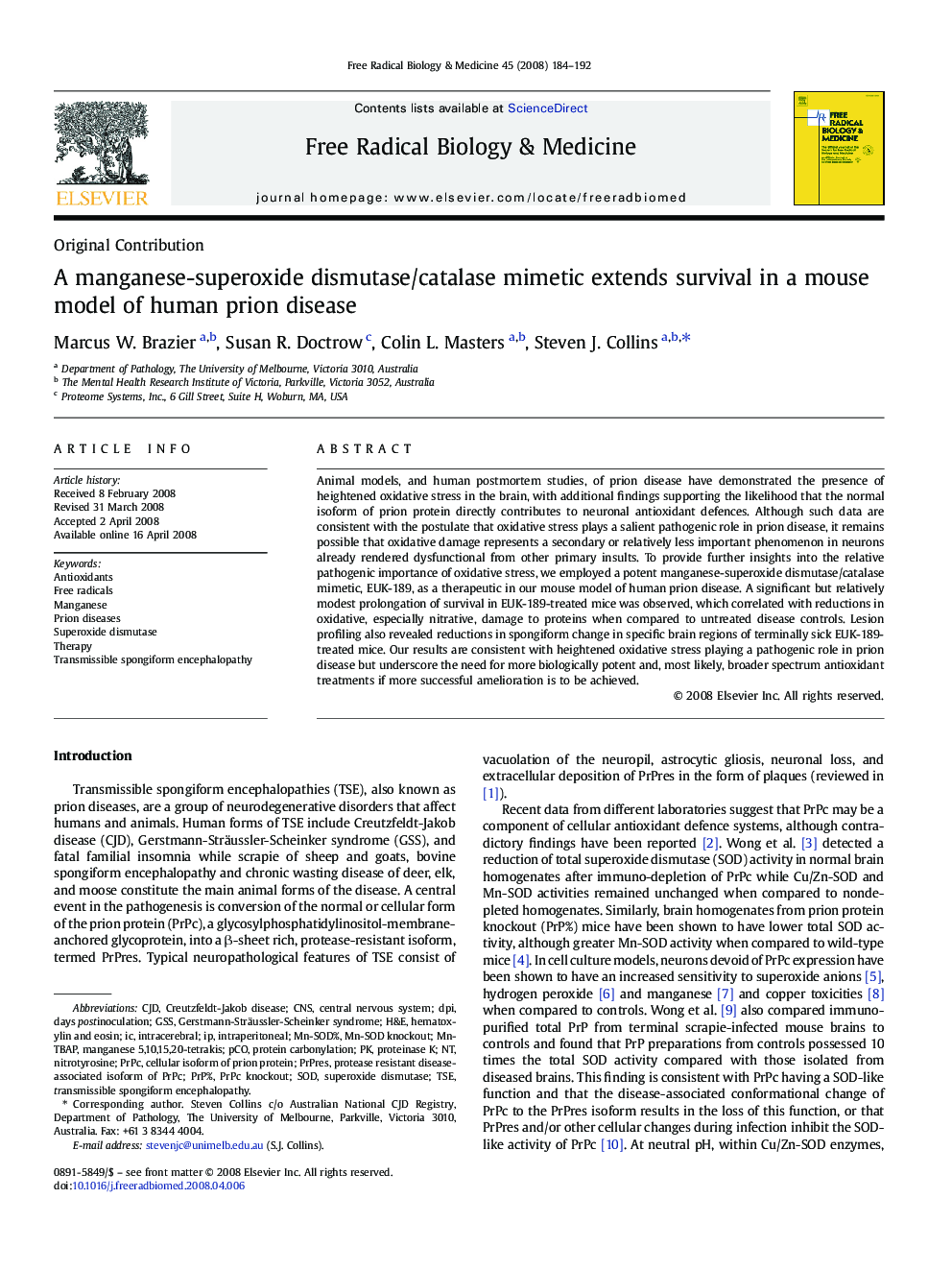| Article ID | Journal | Published Year | Pages | File Type |
|---|---|---|---|---|
| 1910821 | Free Radical Biology and Medicine | 2008 | 9 Pages |
Animal models, and human postmortem studies, of prion disease have demonstrated the presence of heightened oxidative stress in the brain, with additional findings supporting the likelihood that the normal isoform of prion protein directly contributes to neuronal antioxidant defences. Although such data are consistent with the postulate that oxidative stress plays a salient pathogenic role in prion disease, it remains possible that oxidative damage represents a secondary or relatively less important phenomenon in neurons already rendered dysfunctional from other primary insults. To provide further insights into the relative pathogenic importance of oxidative stress, we employed a potent manganese-superoxide dismutase/catalase mimetic, EUK-189, as a therapeutic in our mouse model of human prion disease. A significant but relatively modest prolongation of survival in EUK-189-treated mice was observed, which correlated with reductions in oxidative, especially nitrative, damage to proteins when compared to untreated disease controls. Lesion profiling also revealed reductions in spongiform change in specific brain regions of terminally sick EUK-189-treated mice. Our results are consistent with heightened oxidative stress playing a pathogenic role in prion disease but underscore the need for more biologically potent and, most likely, broader spectrum antioxidant treatments if more successful amelioration is to be achieved.
